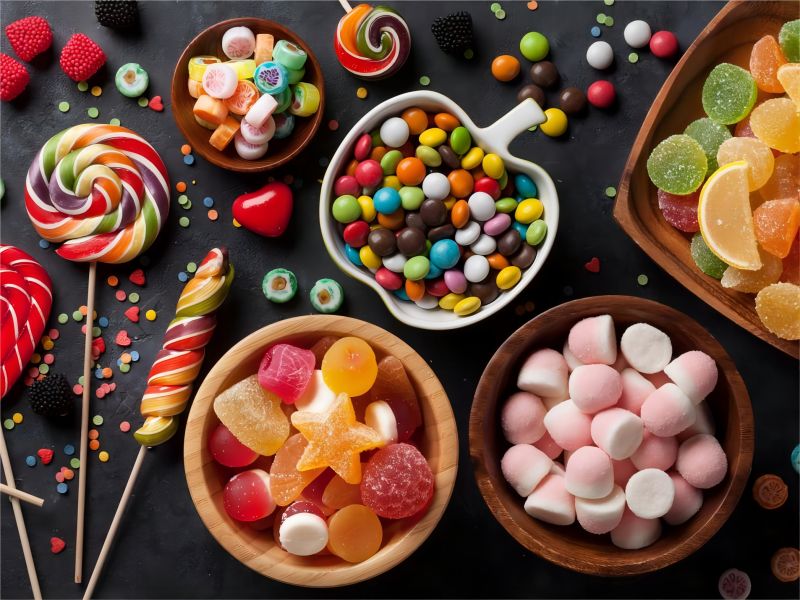What is glucose syrup?
Glucose syrup is a refined and concentrated solution of dextrose, maltose and higher saccharides, obtained by hydrolysis of starch. Sweetener glucose syrup is more distinct than sugar, partly because it is a syrup, which means that the solution is a thick, sweetish liquid. However, in contrast to golden syrup – which you can learn more about here – glucose syrup is a clear solution, and is much less sweet than its globally recognised counterpart.
As a result, glucose syrup is used for its lack of a distinct taste, its transparency and its viscosity. Both the sweetness and the viscosity, though, are dependent on how long the solution is hydrolysed.
How is glucose syrup produced?
Starch Extraction: The production of glucose syrup typically begins with the extraction of starch from cereal grains, most commonly corn (maize). The starch is separated from the grain through a milling process.
Hydrolysis: The extracted starch undergoes hydrolysis, a process in which it is broken down into simpler molecules, primarily glucose. This can be achieved through enzymatic or acid hydrolysis.
Purification: Following hydrolysis, the resulting mixture undergoes purification to remove impurities and excess water, resulting in a concentrated glucose syrup.
Variations: Depending on the desired properties and applications, glucose syrup can undergo further processing, such as filtration, enzymatic treatment, or blending with other sweeteners.

What products is glucose syrup used in?
Glucose syrup is one of the most versatile sugar products available. It is found in confectionery, beverages, bakery, sauces and pharmaceuticals. But given the fact that glucose syrups are traditionally regarded as the same formula as confectioner’s syrup, let’s start with confectionery. The syrup’s viscosity adds volume to these sweets, helping them become sweeter, chewier and stickier.
After confectionery, the use of glucose syrup in beverages is the next most popular application. As a concentrated source of sugars, glucose syrup adds vital sweetness and flavour to juices, fizzy pop and sports drinks.
However, its versatility lies in more than its sweetness and viscosity. In fact, its humectant properties are the most important factor in making glucose syrup such a valuable ingredient for multiple industries. For instance, glucose syrup is added to packaged baked goods, as well as jams and sauces, to prevent crystallisation and to help preserve the product. Similarly, it is added to pharmaceutical products to protect their shelf life, usually for a period of up to 12 months.
Furthermore, it is important to note that despite being manufactured from wheat or maize, glucose syrup is considered gluten free because the process of hydrolysis removes gluten from the solution. Therefore, glucose syrup can be included in gluten free diets.